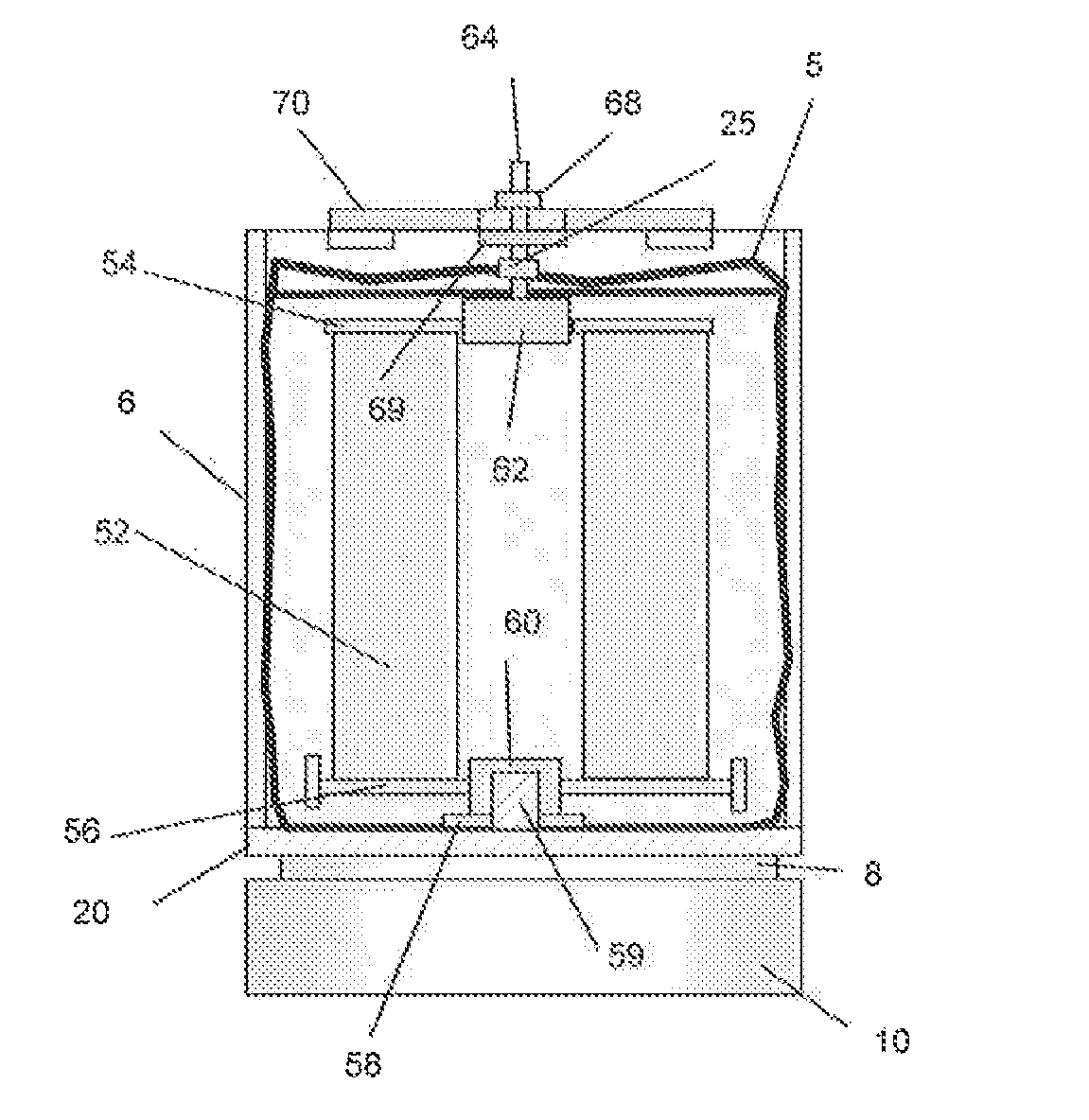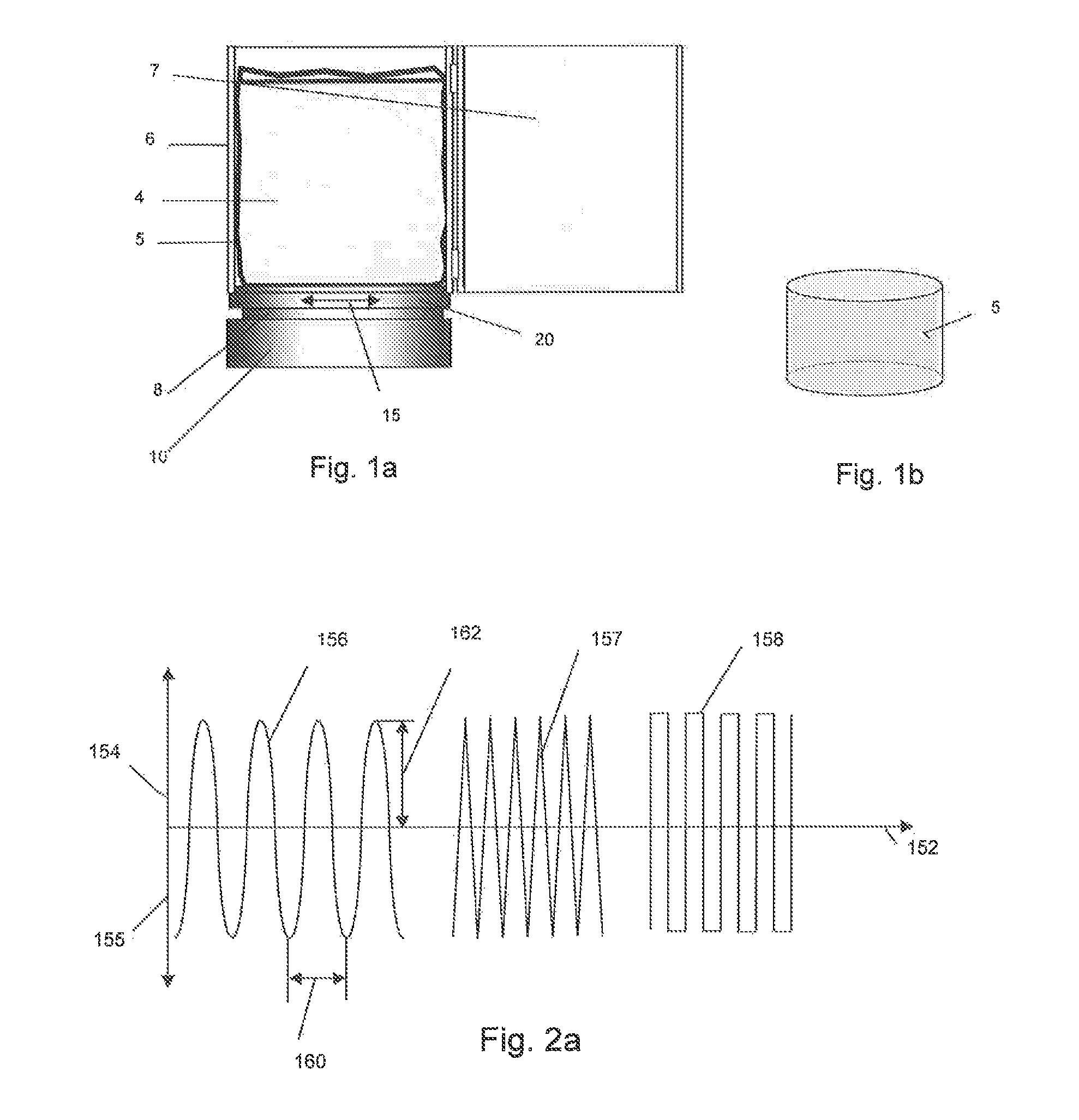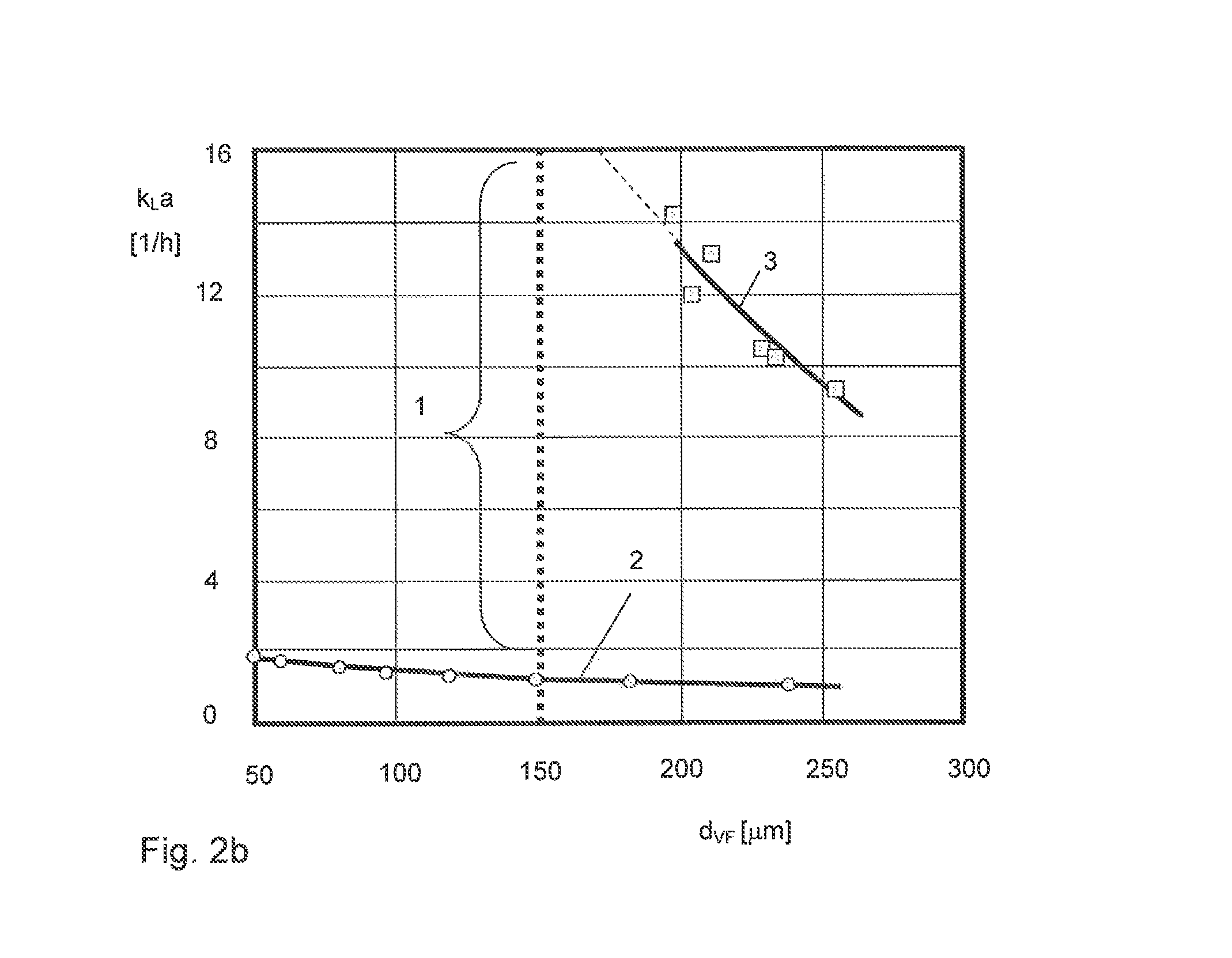Eccentrically-rotating reactor
a reactor and eccentric rotation technology, applied in the direction of rotary stirring mixers, after-treatment of biomass, transportation and packaging, etc., can solve the problems of requiring laborious reactor transportation, affecting the efficiency of the reactor, and being usable with comparatively small reactor scales
- Summary
- Abstract
- Description
- Claims
- Application Information
AI Technical Summary
Benefits of technology
Problems solved by technology
Method used
Image
Examples
Embodiment Construction
[0028]By means of the internals, distribution processes and / or mixing reactions can be carried out in a simple manner and with the same intensity as in a conventional stirred tank. In this design, a shaft passage can be dispensed with completely. The internals again may be supplied with material streams or energy streams via the side facing away from the product, which streams are introduced into the medium or discharged therefrom by diffusion, convection, heat conduction and / or radiation. In this manner, for the first time, in addition to mixing, numerous process engineering unit operations such as gas distribution, oxygen input by means of membrane gas introduction, heat transport, irradiation and / or particle retention can be carried out in a single-use reactor in a gentle manner and with an efficiency comparable to a stirred tank. The reactions and transport processes proceed in this case directly at the internals. Therefore, the sites of the greatest hydrodynamic energy density ...
PUM
 Login to View More
Login to View More Abstract
Description
Claims
Application Information
 Login to View More
Login to View More - R&D
- Intellectual Property
- Life Sciences
- Materials
- Tech Scout
- Unparalleled Data Quality
- Higher Quality Content
- 60% Fewer Hallucinations
Browse by: Latest US Patents, China's latest patents, Technical Efficacy Thesaurus, Application Domain, Technology Topic, Popular Technical Reports.
© 2025 PatSnap. All rights reserved.Legal|Privacy policy|Modern Slavery Act Transparency Statement|Sitemap|About US| Contact US: help@patsnap.com



